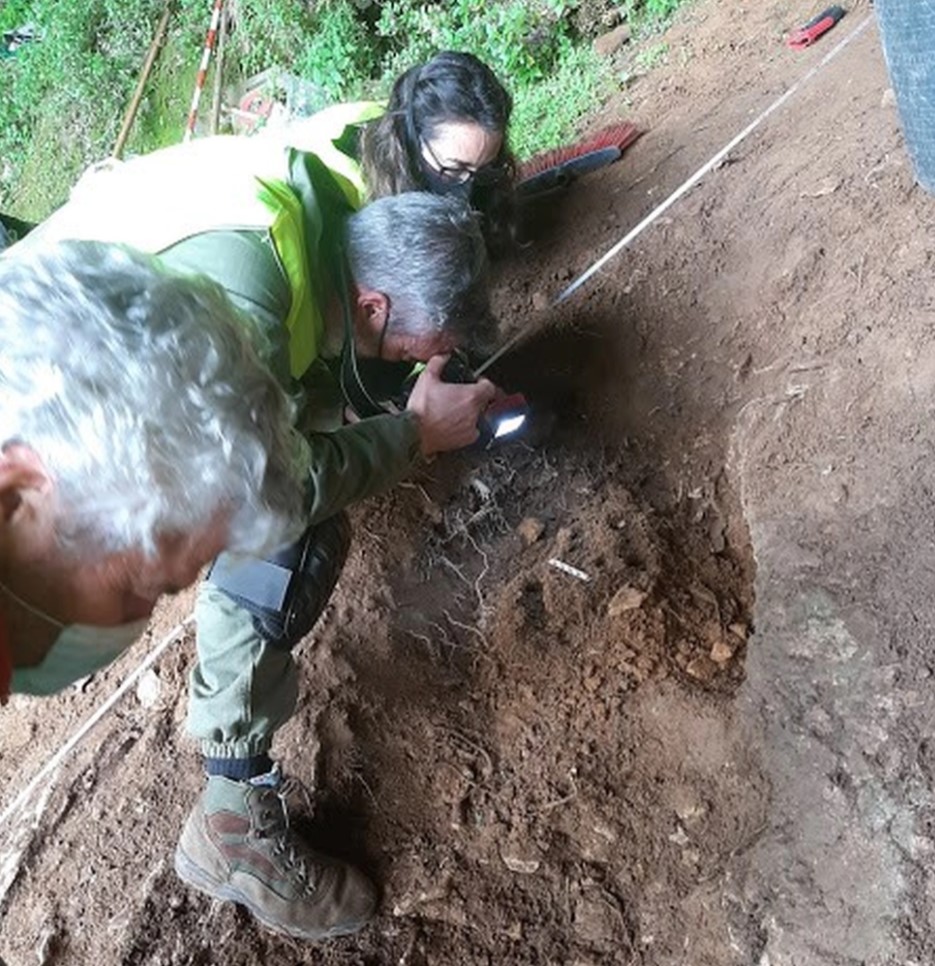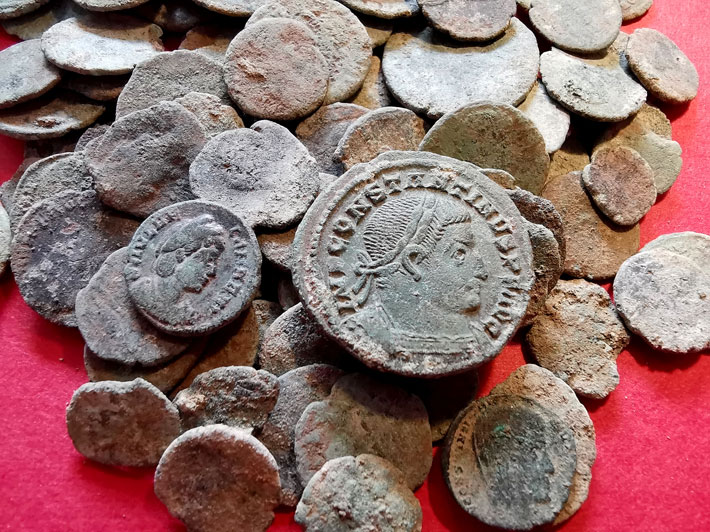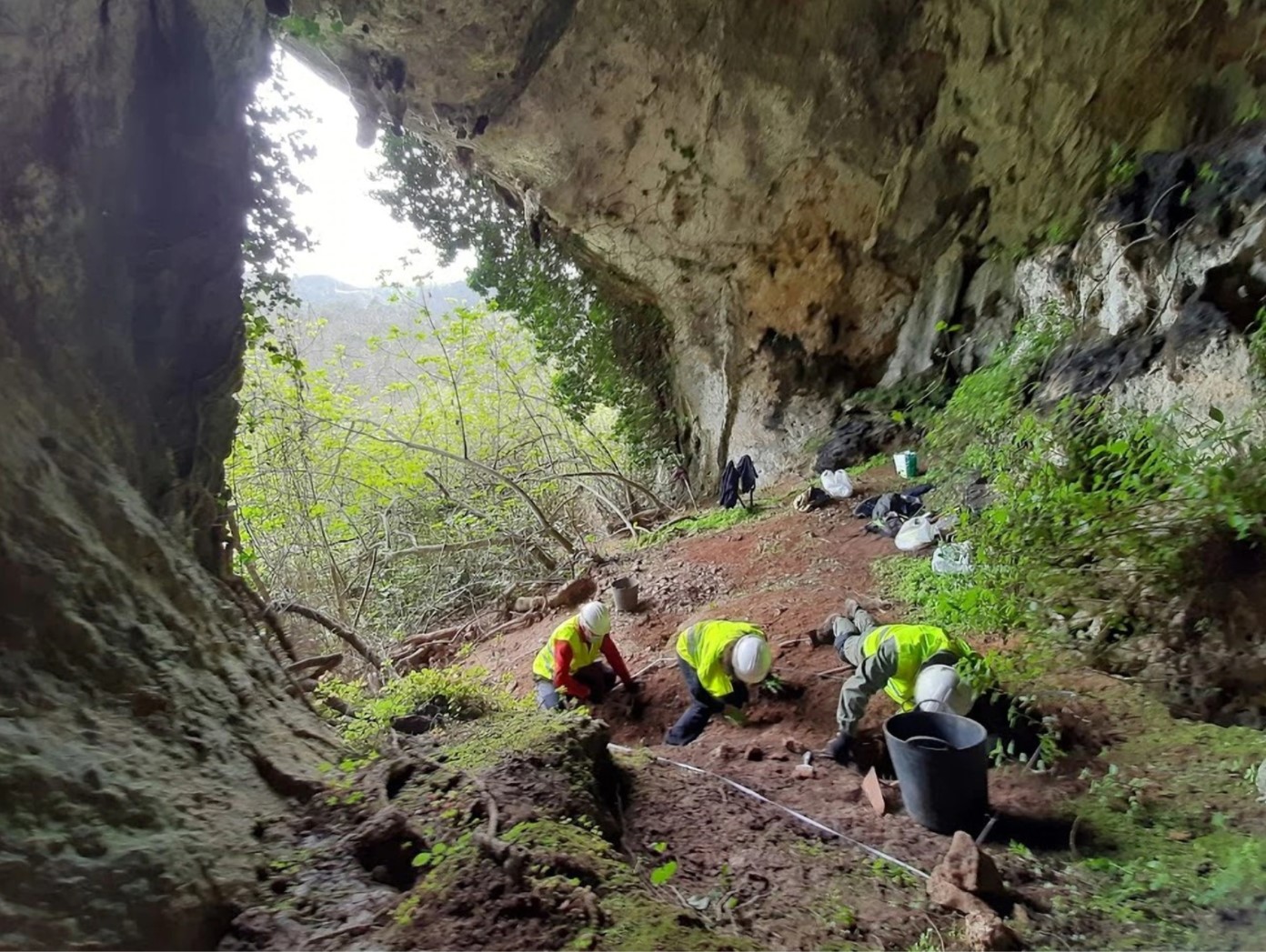Jezevec neboli Tejón, je ve vyhrabávání pokladů naprostým přeborníkem nejen ve Španělsku, ale i u nás, protože rád hrabe hluboko a především ví kam má hrabat a to umí málo kdo🦡👌👍
Badger found Roman treasure
Categories: Nálezy nejenom s detektorem v západní Evropě
During last year's storm Filomena near Grado in the Spanish region of Asturias, it snowed heavily and froze. Apparently, at that time the badger was searching a cave near its den in a desperate attempt to find food. While digging one of the holes, he came across the largest collection of Roman coins ever discovered in northern Spain.
The animal found no use for the old coins, however, and so left them scattered in front of his "dig". The first 90 coins were accidentally found by a local citizen, Robert Garcia, when he went to explore the La Cuesta cave. The discovery was brought to the attention of the regional archaeologist Alfonso Fanjul Peraza, who carried out an initial excavation which uncovered a total of 209 Roman coins dating from between the 3rd and 5th centuries AD. This corresponds to the late Roman period, when barbarians such as the Suebi, who invaded the area in 409, arrived in the Iberian Peninsula.
"When we arrived, we found a hole that was facing the badger castle and a lot of coins on the ground around it," Peraza told CNN. The archaeologist believes the coins were hidden by refugees who were hiding in the area: "We think the coins are a reflection of the social and political instability that came with the fall of Rome and the arrival of the barbarians in northern Spain."
Experts say the coins were mostly minted in the former Constantinople (now Istanbul) of Syrian Antioch and Greek Thessaloniki, with one coming from London. It is the largest hoard of Roman coins ever found in northern Spain. Other treasures have been found in the dense forests near the city of Grada. In the 1930s, 14 gold coins dating from the reign of the Roman emperor Constantine I (reigned from 306 to 337 AD) were discovered in the area.
"The coins are currently being cleaned and, after conservation, will be exhibited at the Archaeological Museum of Asturias," said Peraza, who plans to carry out further excavations at the site this year. "We have removed the first deposit, but we think there are many more. It's a unique moment that you dream about from your youth. A moment you never thought you would actually experience as an archaeologist," he said.
The research project, funded by the Cultural Department of the Province of Asturias, is in its first phase. Archaeologists hope to return to the area again to conduct further excavations that will improve the understanding of thethe fall of the Roman Empire and the rise of the medieval kingdoms of northern Spain. "We think the area is an ideal place to learn more about the people who experienced this transition," Peraza explained in conclusion.
But whether there's any treasure still hidden here, perhaps only the old badger knows yet...
Roman Nemec
Sources: archaology.org, bbc.com, abc.net.au

Two archaeologists work directly in the badger hole at La Cuesta de Berció cave in Asturias.
La Cuesta de Berció cave with the treasure being investigated - the cave is located about 16 m above the Nalon River

Some of the coins of the badger's find
The article is included in categories:
- Archive of articles > Archaeology > Finds and rescue research abroad > Nálezy nejenom s detektorem v západní Evropě
Post
Už to tady proběhlo xerox asi zaspal https://www.novinky.cz/koktejl/clanek/jeden-z-nejvetsich-pokladu-rimskych-minci-vykopali-jezevci-40383895
S velkou rezervou jsem bral tento článek na novinkách.cz ale jak je presentován zde, to už mi nepřijde ani vtipné natož zajímavé.
Jezevec našel... ...jezevec narazil na sbírku... ...zvíře pro mince nenašlo využití...
Snad možná na silvestra se lze utrhnout ze řetězu a popustit uzdu fantazii tímto směrem 
MarkyMark 
Divočáci už nefrčí, teď jedou jezevci😀si nějakýho pořídím a bude za mě závodit v Brandlíně.Já si zatím odskočím na nějakej lágr😄😄😄














